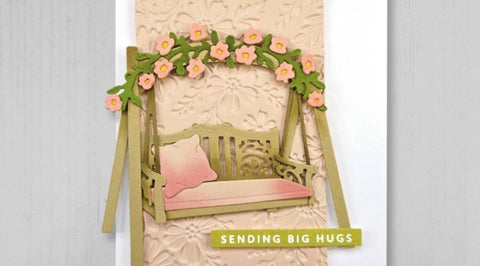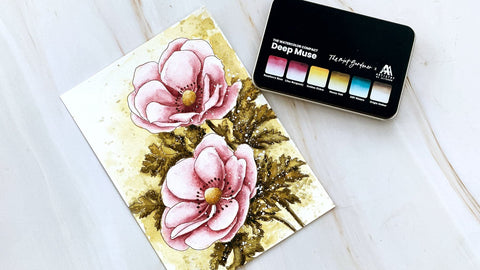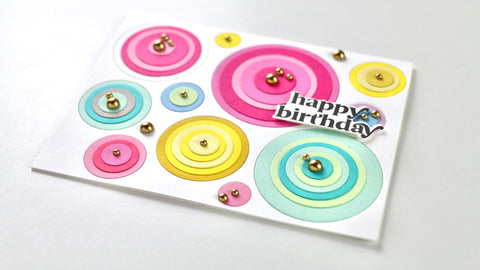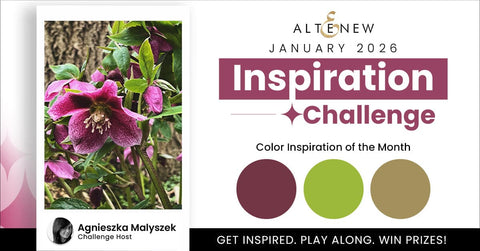10 Best Ink Pads for Stamping, Card Making, and Scrapbooking
Last Updated: August 28, 2025
Finding the best ink pads for stamping can be a bit overwhelming for beginners and even seasoned stampers. If you’re into crafting, you know that looking for the right ink pad is only half the battle. Since they come in an assortment of colors, types, formulations, and sizes, you need to figure out a few other factors, such as the surface you’re stamping onto and the techniques you’re going to use. Do you need something fast-drying or slow-drying? Or perhaps your DIY craft requires a fade-resistant stamp pad ink? Are you using it for alcohol marker coloring or layered stamping? Do you need to stamp on fabric, wood, or just paper?
If you’re still confused about which type of ink pad to use for different techniques and projects, then let us clue you in!

What Is an Ink Pad?
The earliest forms of ink were used mainly for drawing and writing. As time went by, inks were dyed in various colors. The manufacturing of ink involves dissolving dye into the ink and grinding pigment powder. This mixture is then combined with water, alcohol, or some type of oil, and heated to achieve its liquid consistency.
Before the popularity of ink stamp pads for crafting, ink pads were primarily used in offices and businesses to stamp logos, dates, signatures, labels, etc., and authenticate documents. They come in small, flat tin or plastic cases with either a felt pad or foam pad. This absorbent material stores the ink properly and for a long time. You can simply press the stamp onto the ink pad, and it will automatically transfer the ink evenly onto the design on the stamp. Stamping it onto a surface will then transfer the design onto it.

Generally, there are two types of materials used for ink pads:
- Felt ink pad - This is the most commonly used material, especially for dye inks. It provides a soft cushion just like foam, while the felt’s series of thread weavings offer longevity and even ink distribution. Some ink pads have a firm felt pad, while others have a soft felt pad.
- Foam ink pad - This is usually more of a soft sponge and is typically used for pigment inks. It also distributes the ink evenly, but some may dry out quicker than others.

Different Types of Inks in Stamping
Not all ink pads are created equal. While they all do one job - that is, to give life to your stamps - these versatile tools have distinctive features. Even if you’re just an occasional crafter, it will be in your best interest to remember which ink to use for your arts and crafts.
Here’s a quick run-through of the main types of ink stamp pads for crafting!
1. Dye Ink is a translucent ink that will absorb into the paper and dry quickly, making it ideal for stamping. Most brands have a firm felt pad; others have a soft felt pad. Its main characteristic is that it dyes the paper and gets absorbed by it. It is see-through, and it leaves a stain. It is also water-based, so it can’t be used with other water-based mediums, Since it dyes the paper, it will look splotchy at first, but it will smooth out and reach its true colors in a few minutes. Heat-setting will help smooth out the colors quickly.

2. Pigment Ink - This ink usually comes in a foam ink pad. Unlike dye inks, it dries slowly and is, therefore, more prone to smudging (so make sure to let it dry completely). It is more permanent and waterproof, making it great for watercoloring and other water-based techniques. Its main characteristic is that it is opaque, and it sits on the surface, as opposed to being absorbed into the surface. This is also the reason why it stays wet for a while. Not only is it one of the best ink pads for stamping, but it is also ideal for heat-embossing and other mixed media techniques.
3. Embossing Ink - As the name suggests, this ink is used for achieving an embossed or watermark effect. Essentially, it is ink with a sticky property, which helps hold the embossing powder. Clear embossing ink is a staple in every card maker’s stash, but there are also colored embossing inks available in the market. The beauty of clear embossing ink, though, is that you can simply add different colored embossing powders onto it and heat-set it with a heating tool. This will produce a stunning and shiny embossed design.
Ink Pad Sizes
Size also matters when figuring out the best stamp pad ink for your paper crafts. Quick browsing through various arts and crafts stores will show you that most inkpads are rectangular or square-shaped. Although you might find some oval-shaped or tear-shaped ones, most inkpads in the market today have almost the same size and dimension.
1. Full-sized inks - If you are looking to stamp large images, especially solid ones, full-sized inks will be your best friend. Full-sized ink pads are great for general stamping because it gives just the right amount of coverage for the majority of the clear photopolymer stamps available in the market. While most full-sized ones come in a rectangular shape, others are oval-shaped.
Altenew’s full-sized inks are oval-shaped and have some grooves on the top and the bottom portion, so you can quickly grab the lids and lift them off. Our oval ink pads also stack up nicely, so they’re easy to store.

2. Mini cubes - If you are looking to invest in ink stamp pads for crafting but need something portable and space-friendly, go for mini cubes! Not only are they much more affordable than full-sized ones, but you can also easily pack them up and take them anywhere you go. These are light and ideal for small or medium images or more intricate stamp designs with harder-to-reach areas.
PRO TIP!
If you are dying to try out an ink line from a company, but you’re kind of on the fence because of the price and quality of the inkpads, buy the mini cubes first! That way, you can really test out these babies and make your decision whether or not you’re going to buy the full-sized ones next time.
What is the best ink pad for stamping?
Let’s face it. There are many things to consider if you’re trying to find the best ink pads for stamping. Although dye inks are the most preferred inks by stampers, card makers, and scrapbookers, you still need to consider a few things.
- Surface - Are you using cardstock paper, fabric, wood, textured paper, etc.?
- Techniques - What card making techniques are you doing? Layering, ink blending, watercoloring, heat-embossing, or simple stamping?
- Colors - Remember, the quality, price, and popularity shouldn’t matter as much as the colors. Colors are vital in your ink preference. Choose colors that you actually like and can use on your projects. It’s always great to have a wide range of colors in your crafting arsenal.

Mandala Builder Stencil Set (3 in 1)
- Storage - Think about the storage you have (or don’t have). You don’t want to buy way too many stamp pad inks and not have any space to store them.
- Portability - Are you a crafter-on-the-go? If you constantly attend workshops, crops, meets, and craft shows, you might want to consider your inks’ portability.
- Price point - Inks aren’t the cheapest crafting supplies, but there’s no reason to deprive yourself of decent and good quality inks. You can always be on the lookout for sales, discounts, and other deals to grow your ink collection.
- Formulation - Do you need something water-based or oil-based? Are you looking for something easy to blend or something that you can use for alcohol marker coloring?
- Refillable - Are re-inkers available for these inks? If your inkpads are “well-loved,” then you’d probably find yourself needing re-inkers sooner than you thought.
PRO TIPS!
- Try out mini ink cubes first - they’re inexpensive and great for practicing or building your collection!
- Mix ink lines - don’t stick to just one ink line or company!
- If you’re a messy stamper, use inks that dry quickly!

From Summer to Winter Pigment Ink Bundle
Top 10 Best Ink Pads for Crafting
We’ve listed down 10 of the best ink stamp pads for crafting. Please take note that these are based on our design team’s preferences, our own research, Amazon customer reviews, and Jennifer McGuire’s highly recommended inks. Keep in mind that not all ink pads are created equal, and other crafters’ opinions of these ink pads should be taken with a grain of salt.
|
Ink Brand |
Type of Ink |
Pros |
Cons |
|
1. Tim Holtz Distress Inks |
This is a dye ink that reacts with water. It is a firm, felt ink pad. |
-It is excellent for ink blending. -It reacts well with water. -Distress Oxide inks have both pigment and dye properties. |
-It needs to be re-inked more often than others. -It is a bit pricey. -The full-sized ink pads are a bit bulky and not space-friendly. |
|
2. Ranger Jet Black Archival Ink |
This is a permanent black pigment ink. It is acid-free and waterproof. |
It is a great ink pad to use with alcohol markers and watercolors since it doesn’t bleed. It lasts for a long time. It is heavily pigmented. |
Some customers complained of the ink being dried out or splotchy. The thin plastic container isn’t easy to hold on to. |
|
This is an oil-based pigment ink in black. It is specially formulated, so it is more of a “fine” pigment ink. It dries quicker than most pigment inks. |
-It provides exceptionally crisp results. -It is admired for its super dark, rich black color. -It is ideal for watercoloring and heat-embossing. |
-Since it is still a pigment ink, the slow drying time can cause issues like smudging. -It is heavily pigmented, making it a bit difficult for some to clean it off their stamps and hands. |
|
|
4. Tsukineko StazOn Jet Black Ink |
It is a solvent-based ink with a full and rich black color. It stays on for a long time and withstands smudging. |
-It is a multi-surface ink that adheres to most non-porous and semi-porous surfaces like acetate, plastic, acrylic, rubber, metal, leather, and cellophane. -It is quick-drying. |
-It is not ideal for fabric. -You cannot use it with alcohol markers. -You need to exercise caution when using it because it is heavily pigmented, and you might end up with an “ink blob” if you’re heavy-handed. |
|
Both are pigment inks in gold color. These are water-based, acid-free, and archival. Jennifer McGuire highly recommends these two gold pigment inks. |
-The Antique Gold Pigment Ink is more of a “solid gold.” It is the ultimate metallic gold. -The Enchanted Gold Pigment Ink is more of shimmery gold. It sparkles when it gets hit by light. It is vibrant gold. -Both have a unique formulation. -Both are great for direct to paper and ink blending techniques. |
-Antique Gold needs to be stamped twice or more. -Enchanted Gold is not as opaque. -Some customers complain that it doesn’t shine as much on other types of surfaces and paper. |
|
|
6. Gina K Designs Dye Inks |
Highly recommended by Jennifer McGuire, this is a dye-based ink with a great color selection. |
-It is available in full-sized ink pads and mini cubes. -The company has cardstock sets & envelopes that coordinate nicely with the ink line. -The ink doesn’t smear when you stamp. |
-It dries quicker than other dye inks, which is both a good thing and a bad thing. |
|
Another Jennifer McGuire recommended ink line. It is water-based and specially formulated so you can use it to watercolor. However, it is one of the best ink pads for stamping layered stamps. |
-It stamps clean and crisp every single time. -It is smudge-free. -It is available in four different colors in the same color family that work well together. -These inks take the guesswork out of which inks go together. -It coordinates with Altenew’s line of alcohol markers and watercolors. |
-It takes a bit of time to even out. -It is less juicy than pigment inks. |
|
|
8. Hero Arts Shadow & Mid-Tone Dye Inks |
This dye-based ink has been around for 10 to 15 years. It is proven, tried, and tested by the majority of seasoned stampers and crafters. |
-It is beautiful and vibrant. -It has excellent coverage. -It is available in full-sized ink pads and mini cubes. |
-It is splotchy and dark at first. -Some customers complained about the ink bleeding on various types of paper. -The company hasn’t added colors in a while, so there may not be a wide selection. |
|
These are fade-resistant water-based pigment inks. |
-Ideal for a variety of non-porous surfaces like paper, wood, and fabric. -It leaves a stunning and detailed impression every time. -Since this pigment ink is acid-free and archival, your artwork will remain intact and well-preserved for a very long time. |
-Too pricey for some. -The color selection is not as comprehensive as other ink lines. -There are no re-inkers available at the time of this review. |
|
|
10. Versamark Ink |
It is a clear stamp pad ink that is used for embossing. This is pigment-based. |
-It is ideal for creating a watermark look. -It is great for emboss-resist techniques. -It gives a crisp result. -It is ideal for stampers who are exploring different techniques. |
-You might need anti-static powder to use it. -Some customers complained about it not being as sticky and juicy. |

There you have it! We hope this list of the best ink stamp pads for crafting has helped you determine which suits your needs and budget! Don’t hesitate to try out different ink lines from other companies. That way, you have a wider selection of colors, formulations, and types of inks!
















I make kitty teasers with 3/8" wooden dowels. I want to try stamping the dowels. What do you suggest? I’m so confused.
Thank you! This was informative and helpful in choosing an ink line for the projects I’ll be doing!
Thanks to you,I think I have sussed out exactly what ink I should be using.I am relatively new at card-making but am enjoying it a lot.You have made it easy to distinguish one ink from another and what ink should be used for what projects.
This was very informative
Thank you!